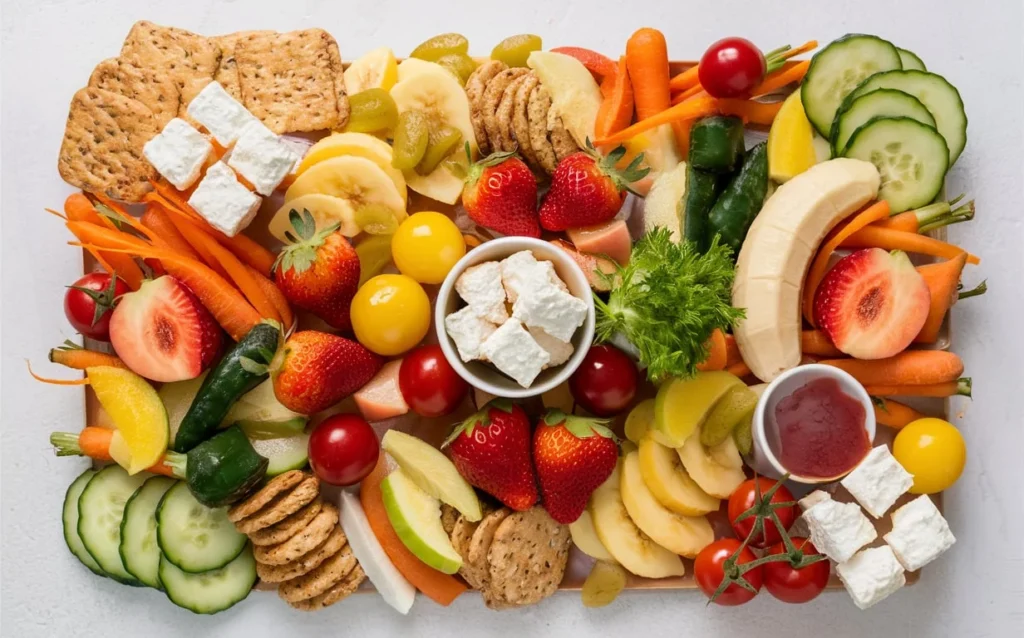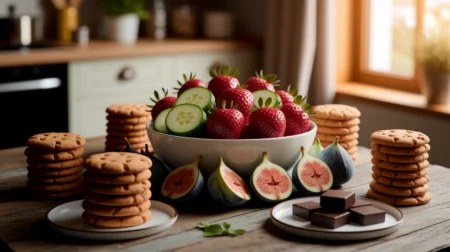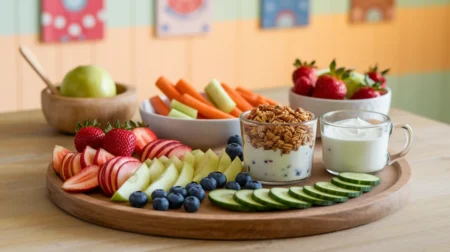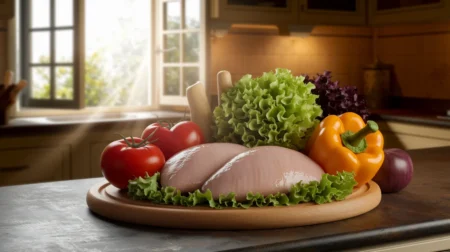Finger Foods for 1-Year-Olds: Healthy and Easy Options for Toddlers
Key Takeaways
- Finger foods for 1-year-olds should be soft, easy to chew, and cut into small, manageable pieces to minimize choking hazards.
- Providing a variety of textures and nutrients helps toddlers develop healthy eating habits.
- Introducing baby-friendly foods early encourages independence and allows babies to explore tastes, colors, and self-feeding skills.
- Offering healthy finger foods for toddlers supports physical growth and fine motor skill development.
Why Are Finger Foods Important for 1-Year-Olds?
Finger foods play a key role in a toddler’s developmental journey. As babies turn 1, they are ready to explore textures and practice self-feeding. This stage helps enhance hand-eye coordination, chewing skills, and independence, all while introducing new flavors and nutrient-dense foods. When choosing finger foods for 1-year-olds, prioritize options that are soft, easy to chew, and cut into small, safe pieces.
Benefits of Finger Foods for Toddlers:
- Promotes independence: Encourages self-feeding and decision-making.
- Boosts motor skills: Picking up small pieces enhances fine motor development.
- Supports a balanced diet: Introduces a wide range of flavors and nutrients.
Easy and Healthy Finger Food Ideas for 1-Year-Olds
1. Soft Fruits
Fruits are naturally sweet, easy to digest, and offer vitamins and fiber essential for a growing toddler.
Examples:
- Banana Slices: Cut into small, bite-sized pieces. Bananas are rich in potassium and easy to chew.
- Soft Peach or Pear Cubes: Choose ripe fruits for a softer texture.
- Blueberries: Gently squish to reduce choking risk for smaller infants.
2. Steamed Vegetables
Steaming vegetables makes them soft enough for toddlers to chew, while retaining essential nutrients.
Examples:
- Steamed Carrot Sticks: Cut into thin strips.
- Broccoli Florets: Soft and easy to grab.
- Sweet Potato Cubes: Rich in beta-carotene and perfect for little fingers.
Tip: Season lightly with herbs for extra flavor while avoiding excess salt.
3. Whole Grains
Whole grains offer energy and fiber that toddlers need for growth and development.
Examples:
- Soft Whole Wheat Toast: Cut into small, manageable squares.
- Mini Pancakes: Choose whole grain or oatmeal versions.
- Cooked Pasta Shapes: Opt for small pasta types like macaroni, penne, or shells. You can mix them with mild sauces or cheese.
4. Protein-Rich Options
Protein helps with muscle and tissue development, making it a critical component of toddler meals.
Examples:
- Cooked Chicken or Turkey Strips: Tender and shredded for easy chewing.
- Scrambled Eggs: Serve plain or mixed with finely chopped veggies.
- Cheese Cubes: Mild, soft cheeses like mozzarella or cheddar.
Health Note: Eggs and dairy should be introduced slowly and carefully, especially for children with a family history of allergies.
Good Finger Foods for Babies and Toddlers
5. Avocado Slices
Avocado is creamy, nutrient-dense, and loaded with healthy fats crucial for brain development.
Serving Tip: Serve as slices or mash slightly for easier picking.
6. Yogurt Melts or Bites
Make your own by freezing drops of plain yogurt with fruit puree for a cool, healthy snack.
7. Baby-Friendly Snacks
- Rice Cakes: Break into smaller pieces for safe snacking.
- Soft Cooked Beans: Black beans or kidney beans work well when slightly mashed.
Meal Ideas for Toddlers
8. Mini Veggie Muffins
Packed with grated carrots, zucchini, and cheese, these muffins are easy to hold and packed with nutrients.
Ingredients:
- 1 cup whole wheat flour
- 1 cup grated vegetables (carrots/zucchini)
- 1/2 cup cheese (optional)
- 1 egg (or egg substitute)
Instructions:
- Mix all ingredients in a bowl and portion into muffin tins.
- Bake at 350°F for 15-20 minutes.
9. Homemade Chicken Nuggets
These baked nuggets are healthier than store-bought and can be seasoned lightly.
Ingredients:
- 1 lb ground chicken
- 1/4 cup breadcrumbs
- Light seasoning (herbs, garlic powder)
Instructions:
- Form small nugget shapes and bake at 375°F for 20-25 minutes.
10. Oatmeal Balls with Peanut Butter (Age Appropriate)
For older toddlers without allergies.
Ingredients:
- 1 cup rolled oats
- 2 tbsp peanut butter
- Honey or a banana for sweetness
Instructions:
- Mix all ingredients and form into small balls.
- Refrigerate until firm.
Tips for Introducing Finger Foods to 1-Year-Olds
- Start Small: Offer small portions to avoid overwhelming your child.
- Ensure Safety: Avoid hard, sticky, or round foods that pose choking risks. Always supervise during meals.
- Vary the Textures: Introduce a mix of soft, crunchy, and smooth foods to encourage exploration.
Conclusion
Finger foods for 1-year-olds are a crucial part of transitioning from purees to solids, enabling toddlers to explore new tastes, improve motor skills, and develop independence. By offering a range of fruits, vegetables, grains, and proteins, you ensure your child receives balanced nutrition while enjoying meal times.
FAQ
1. What are good finger foods for a 1-year-old?
Soft fruits, steamed vegetables, mini muffins, whole grain toast, cheese cubes, and tender meat strips are excellent options.
2. What foods should be avoided as finger foods?
Avoid hard, sticky, and round foods such as raw carrots, whole grapes, popcorn, and large nuts that can be choking hazards.
3. How can I make finger foods more exciting?
Incorporate colorful fruits and veggies, offer dips like yogurt, and introduce new textures regularly to keep mealtime engaging.
4. When should finger foods be introduced?
Babies can typically start finger foods around 8-10 months, but always consult with your pediatrician to ensure your child is developmentally ready.











